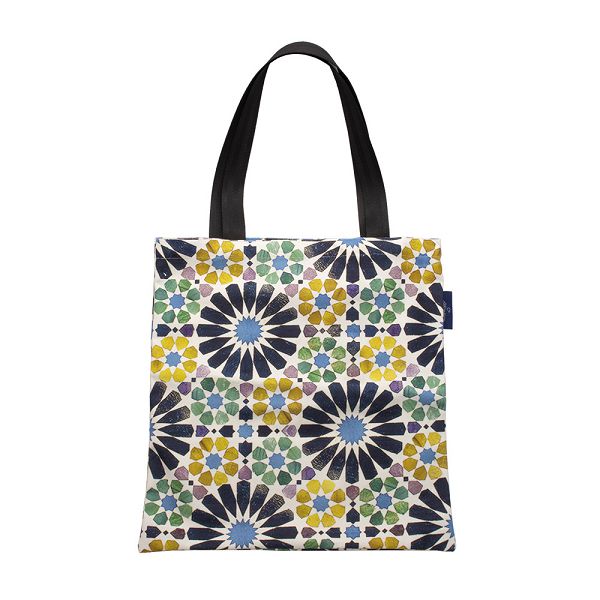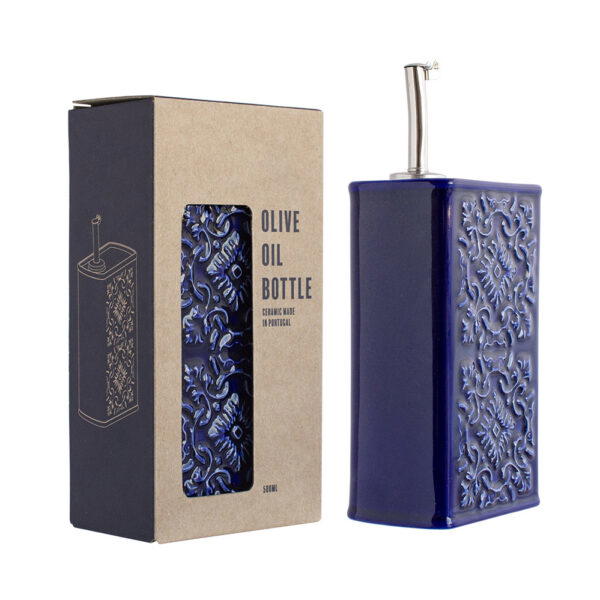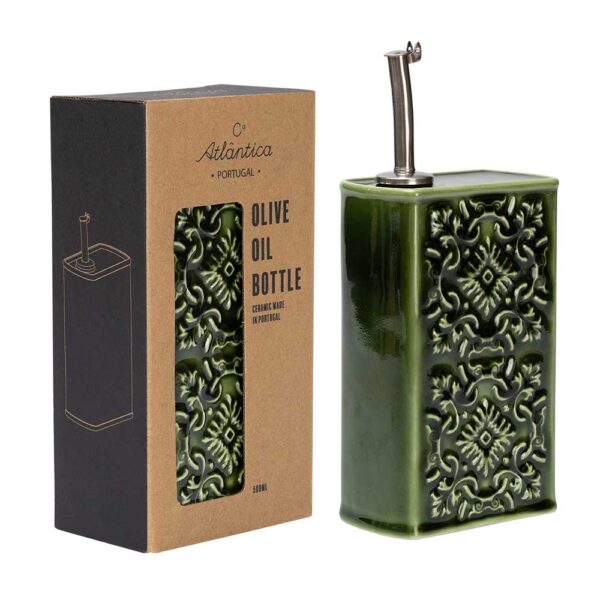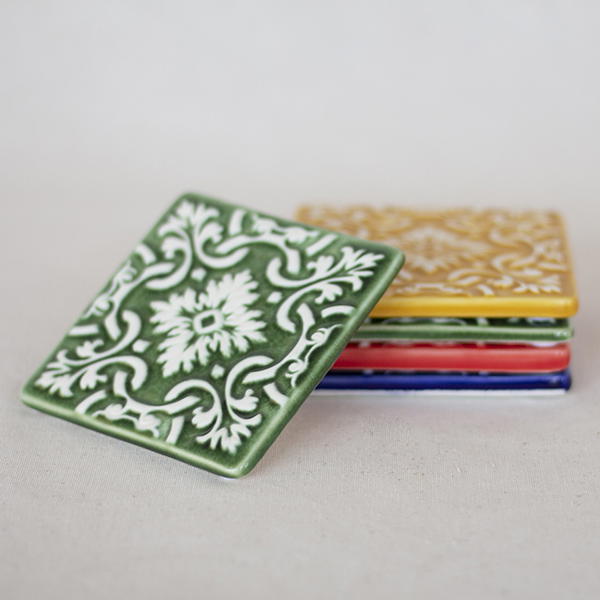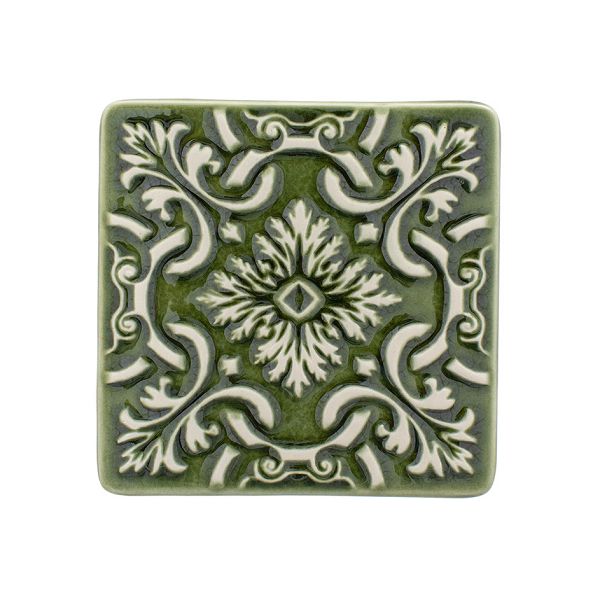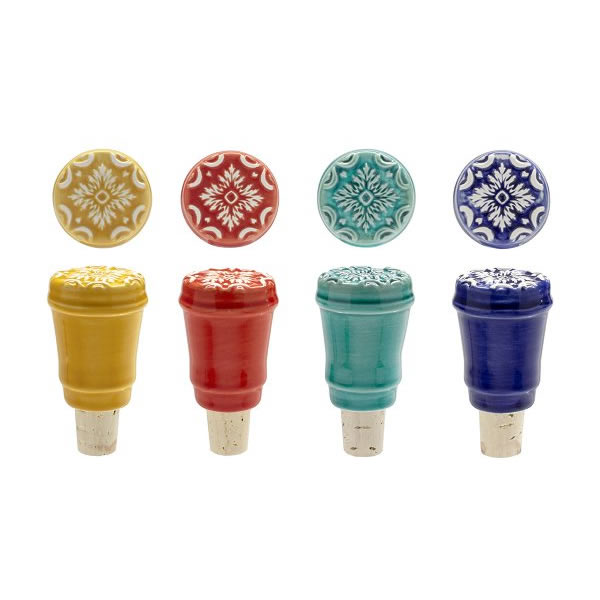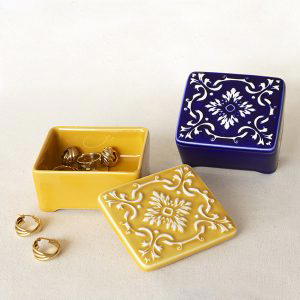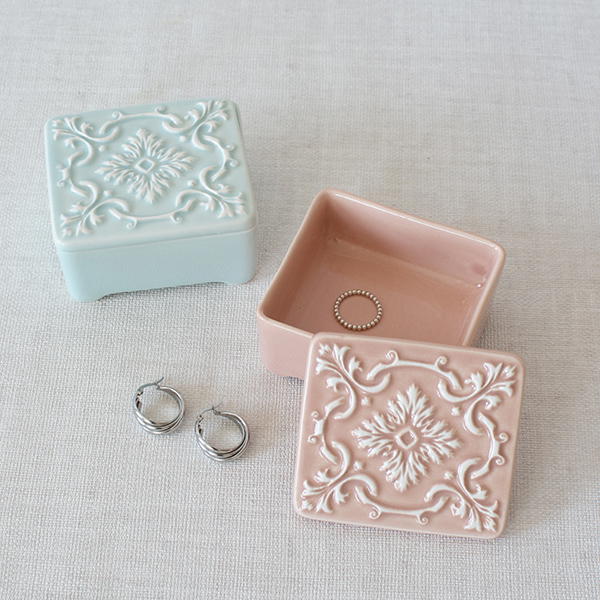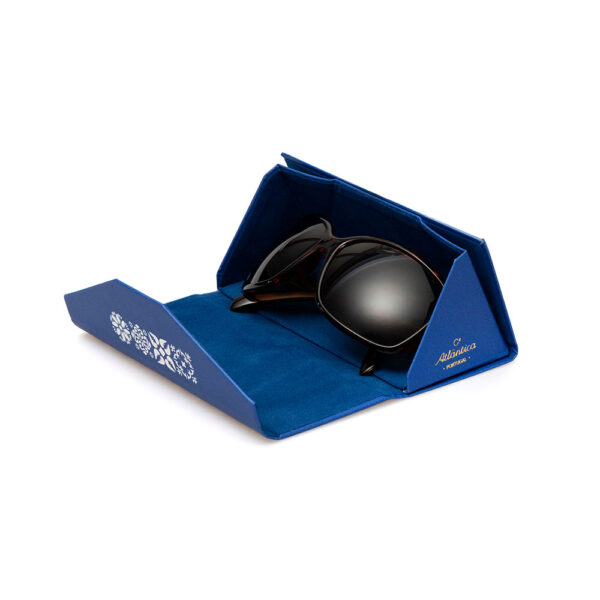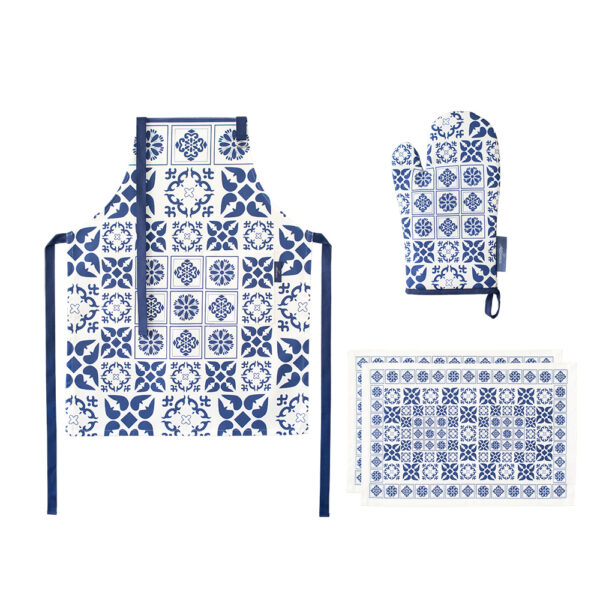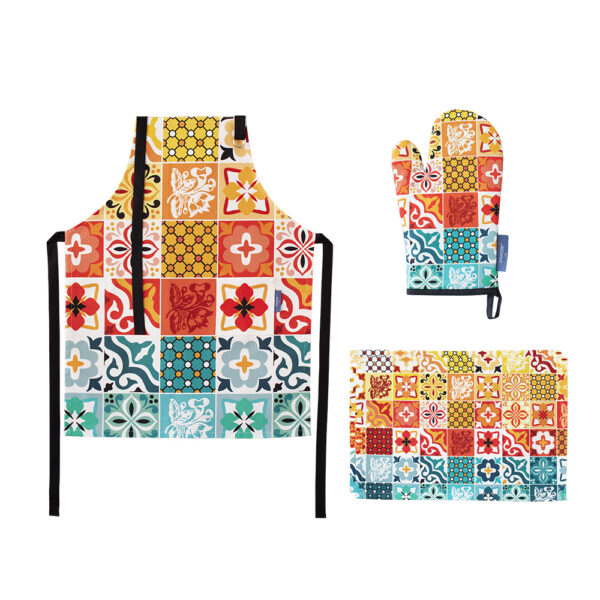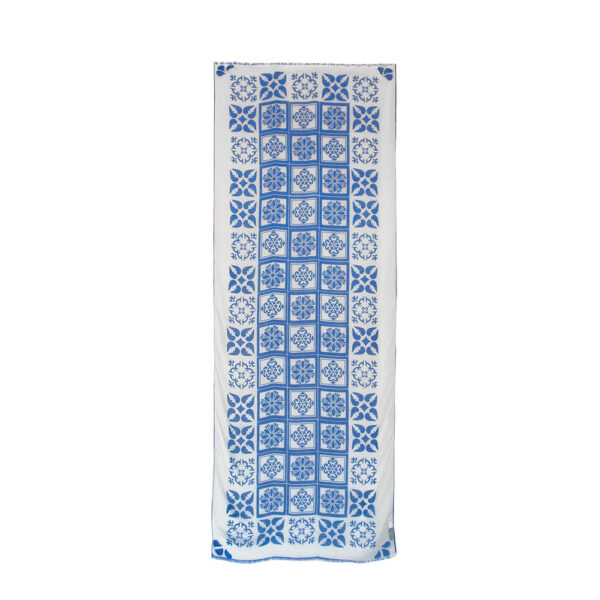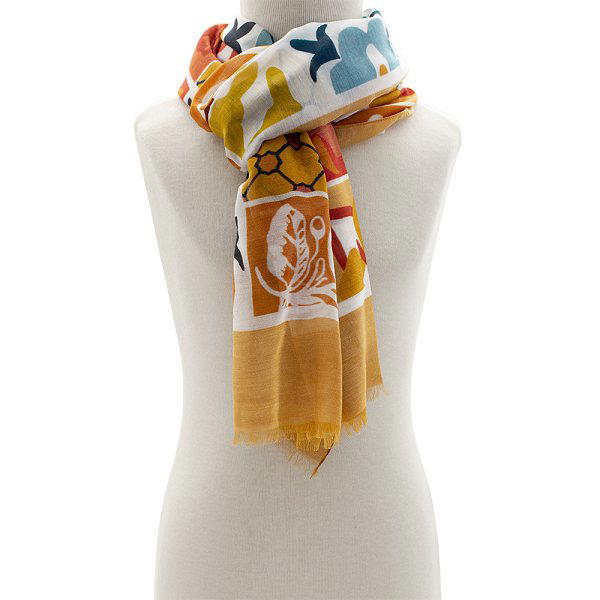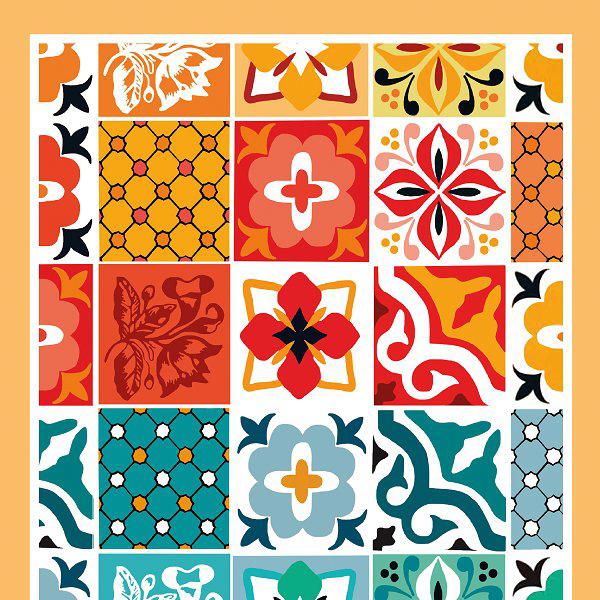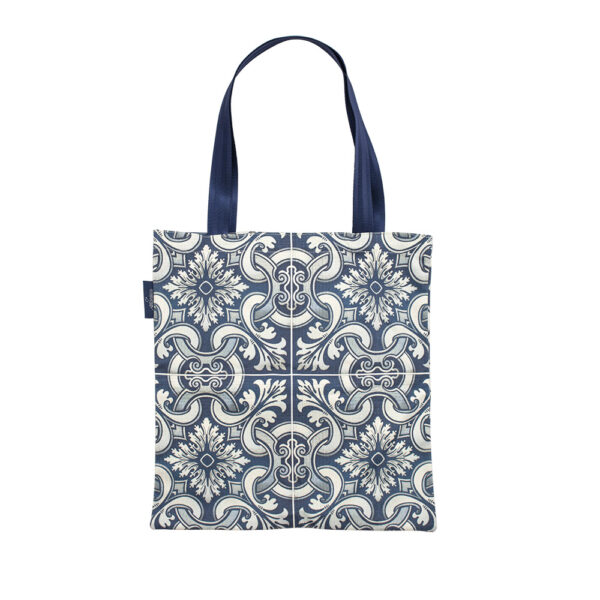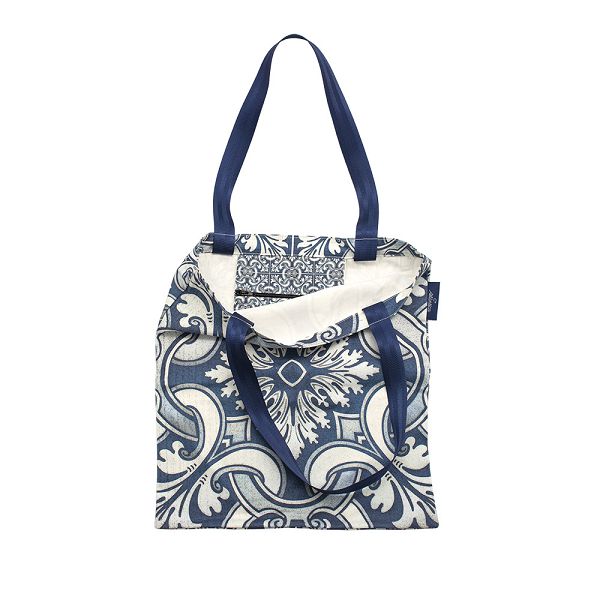The Tradition of Portuguese Tiles
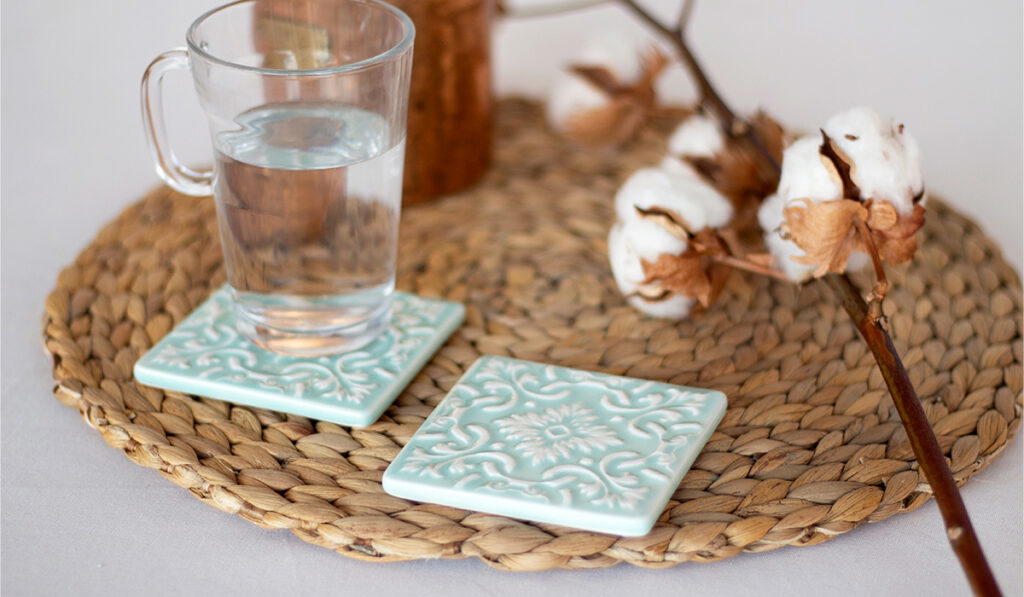
The Portuguese tile has gained great artistic expression over the last five centuries, having been influenced by cultural exchange, which gives it a unique status as a decorative and architectural element.
This influence came about through contact with different cultures, such as Arabic, Spanish, Italian and Dutch, resulting in a rich variety of styles and patterns.
In this article, we invite you to learn more about this fascinating artistic tradition and its impact on Portuguese culture and identity. Discover with us the beauty and significance of Portuguese tiles, a cultural heritage that we are proud of and want to share with you!
The importance of Portuguese tiles
The importance of Portuguese tiles for the country is evident in many ways:
- Cultural identity: the tile is a symbol of Portuguese identity, present on façades, decorative panels, interiors of houses and public buildings. Their presence contributes to the characterization of the Portuguese landscape.
- Historical value: The tiles tell the story of the country, depicting historical events, customs and traditions. They are an important record of Portuguese cultural memory.
- Artistic expression: Tiles serve as a support for the artistic expression of various artists, who today use the technique to create unique and original works of art.
- Cultural heritage: Portuguese tiles are recognized as intangible cultural heritage by UNESCO, which demonstrates their importance to the country’s culture and history.
History of Portuguese tiles
The word azulejo comes from “al-zulaich”, which means polished stone.

Of Egyptian origin, it was brought by the Arabs to the Iberian Peninsula at least 1500 years ago!
Portuguese tiles are basically a ceramic slab measuring 15 x 15 cm, with one side decorated and glazed, making it waterproof and shiny.
It began to be widely used in southern Spain and it was on a trip to Granada that King Manuel noticed this new form of decoration and brought it to Portugal. We can still see these early tiles on the walls of the National Palace of Sintra, which served as the king’s residence. This is home to the largest collection of Mudejar or Hispano-Moorish tiles in Portugal and one of the most important collections in Europe!
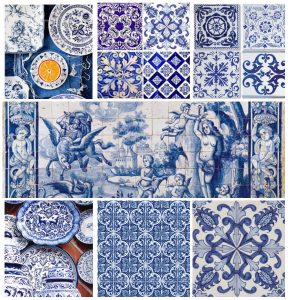
In 1560, pottery workshops began to appear in Lisbon, producing tiles using the faience technique imported from Italy. The paintings were inspired by Italian ceramics, with the blue of Chinese heritage and made using techniques learned from the Dutch.
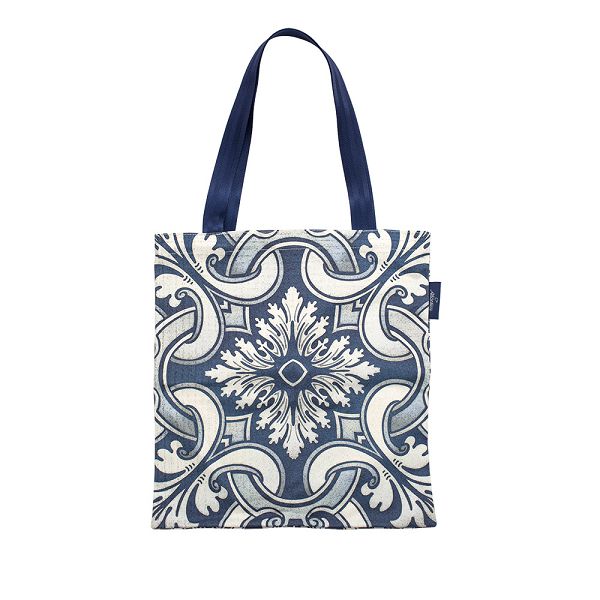
It was in the 18th century that it began to be widely used in churches and convents, houses and palaces, gardens, fountains and staircases. The decoration could range from geometric patterns to representations of stories with various themes, from the religious to the profane.
After the earthquake of 1755, tile production picked up pace for the reconstruction of Lisbon. Tiles were no longer the exclusive preserve of the nobility and clergy, but began to spread to other strata of society.
It was at this time that tiles began to be produced in series, combining semi-industrial or industrial techniques.
The Standard Tile
The patterned tiles, now known as
Pombaline
were produced in large quantities, were less expensive and easier to apply. They then came to be used more frequently to decorate new buildings, especially after the 1755 earthquake.
The patterns were structured using repeating modules of 2×2, 4×4, 6×6 and 12×12 tiles forming carpets framed by borders or bars, often with added friezes.
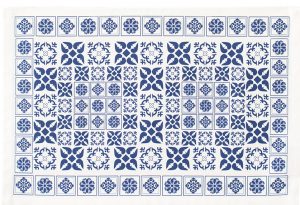
At that time, tiles were polychrome, using the colors blue, green and yellow, although patterns of blue on a white background were also produced.
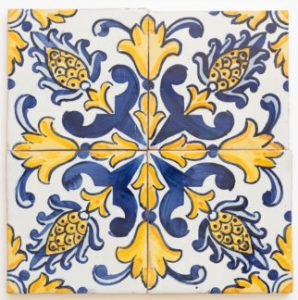
The façades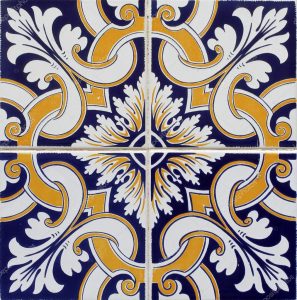 with patterned tiles and surrounds delimiting the doors and windows, are fundamental elements of urban identity in Portugal.
with patterned tiles and surrounds delimiting the doors and windows, are fundamental elements of urban identity in Portugal.
This art form can easily be found from the north to the south of Portugal. In the north of the country, it is more common to see images of contrasting light and shade and pronounced reliefs. Further south, there is a prevalence of geometric and smooth patterns, but also organic shapes, which are more commonly used in exterior façade applications.
Tiles in Companhia Atlântica
The perfect combination of tradition and modernity, in a variety of products for you and your home: Coasters, Stoppers, Jewelry Boxes, Magnets, Aprons, Kitchen Gloves, Table Runners, Scarves, Glasses Boxes, Lip Balm, Soaps and now also Olive Oil Bottles!
Discover our AZULEJO collection, inspired by this centuries-old art.
Table Accessories
Coasters
Home Accessories
Decoration
Text sources: www.visitportugal.com; www.pt.wikipedia.org; www.ensina.rtp.pt; www.comunidadeculturaearte.com;
Image sources: www.crivat.pt; www.azulejo.parquesdesintra.pt; www.idealista.pt; www.br.depositphotos.com;

